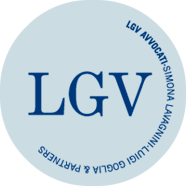ITALIAN SUPREME COURT NO. 8433/2020: CONFIRMED THE COPYRIGHT PROTECTION FOR KIKO’S CONCEPT STORES
13/05/2020
The Italian Supreme Court has confirmed that a project or work of interior design con be considered as a work of architecture if a series of characteristics are met, i.e. a unitary design, a clearly defined and visually perceptible pattern, a clear stylistic key and the personal imprint of the author.
The decision puts an end to the dispute between two well-known companies active in the production of cosmetics, namely KIKO and WYCON: KIKO had taken legal action against the competitor, complaining that WYCON had unduly taken over the aspects of its concept stores designed by an architecture firm on its commission, thus violating its copyright on the project. Moreover, KIKO claimed rights under the law of unfair competition, because of the identical takeover of other elements, such as the vendor’s clothing and accessories, the website’s format, the commercial promotions and the products developed.
With decision no. 11416/2015, the Court of Milan had already recognized the creative and original character of the design of the plaintiff’s stores, highlighting that the choice, the combination and conformation of the furnishing elements used by the plaintiff presented sufficient elements of creativity, since they were not imposed by the technical problem that the author wanted to solve, such as to make the architectural project original and creative. The damage suffered by KIKO was quantified in Euro 700,000.00. The liquidation considered the amount paid by KIKO for the realization of the project, multiplied by 10. After confirmation at the appeal, WYCON appealed to the Supreme Court, motivated inter alia by the incorrect quantification of the damages suffered by KIKO.
With decision no. 8433 of April 30, 2020, the Supreme Court focused on the objection raised by the appellant that a the interior of a concept store could not be protected as a work of architecture, within the meaning of Article 2(5) of the Italian Copyright Law, because it lacked the identification of a specific building area, in which the work should be incorporated, and the organisation of that area by means of fixed structural elements.
The Court, considering the argument unfounded, pointed out that an intellectual work is protected by the law on condition that it contains an original element or combination result of creativity, in order that it may be identified, even though it is part of a common genre, to be a singular product of the author and to be identified among others similar. The notion of architecture would therefore include an activity which is “aimed at the creation and modification of spaces to make them usable by man”, therefore also comprising the organization of interiors.
On the basis of these assumptions, the Court stated that „on the matter of copyright, a project or work of interior design, in which there is a unified design, in a visually perceptible pattern, which reveals a clear „stylistic key“, of individual components organized and coordinated to make the environment functional and harmonious, or the personal imprint of the author, can be protected as a work of architecture, pursuant to art. 2 no. 5 Italian Copyright Law, regardless of the requirement of an inseparable incorporation of the furnishing elements with the building, which is not present in the above provision, or the fact that the individual furnishing elements constituting it are or not simple or common and already used in the sector, provided that it is an original combination result, not imposed by a technical-functional problem that the author wants to solve“.
As regards the liquidation of the damage, the Court has annulled the decision and has referred the case back to the Court of Appeal for a new quantification of the damage suffered. According to the Court, the quantification of the damage made by the Court and the Court of Appeal was arbitrary.
This decision is of particular importance not only for architectural and interior design firms, but also for all entrepreneurs who invest their resources in the creation of an environment within their stores, offering their clients the moment of shopping itself as a 360-degree experience for which the interior decoration of their stores is of crucial importance.
Paolo Passadori
